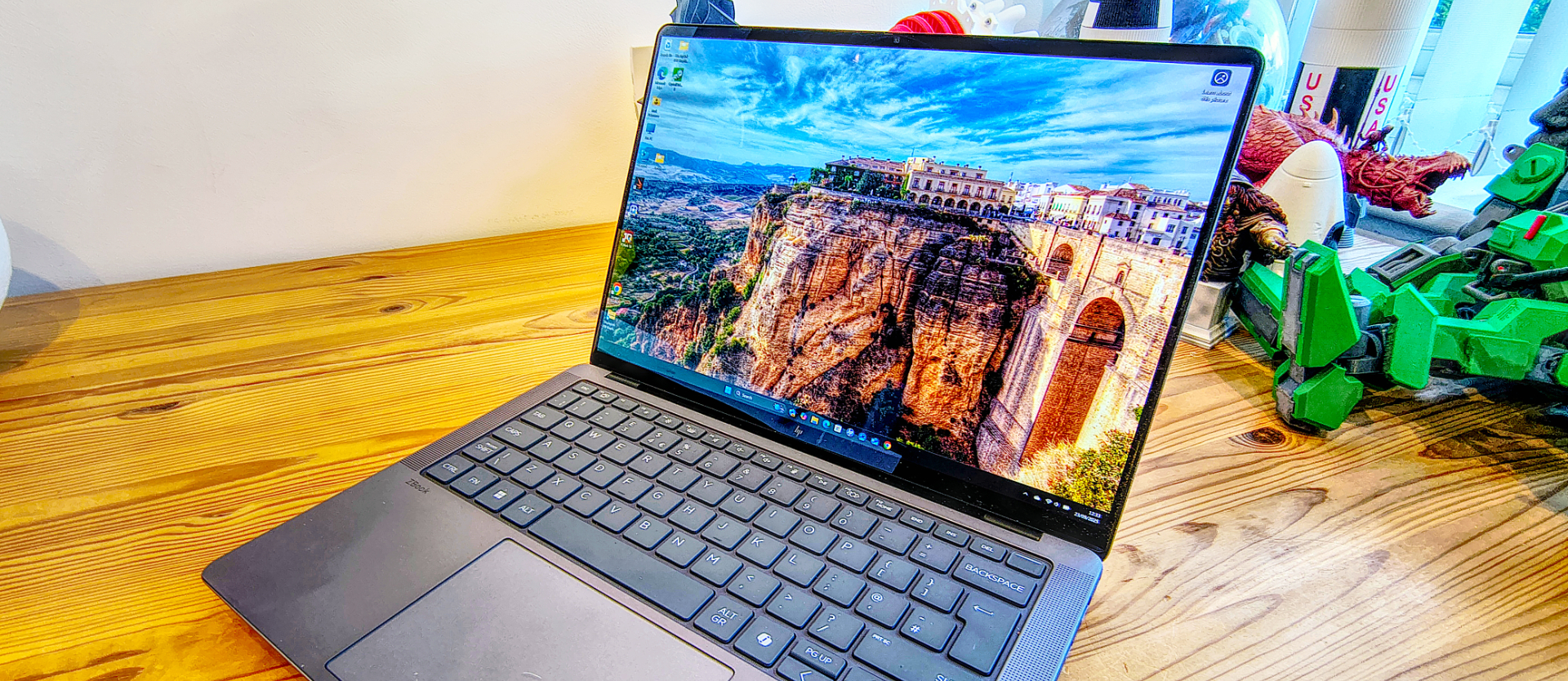TechRadar Verdict
A great demonstration of what Ryzen AI 395 Max+ machines can offer. Remarkably powerful, yet it can still last a long working day on a single battery charge. Makes Intel Core Ultra 200 machines look like they’re running on economy gasoline.
Pros
- +
Latest AMD silicon
- +
LPDDR5x-8533 memory
- +
Radeon 8060S GPU
- +
Exacting build quality
Cons
- -
4TB storage is the maximum
- -
Zero upgrades other than storage
Why you can trust TechRadar
HP ZBook Ultra G1a 14: 30-second review
Externally, this machine bears an uncanny resemblance to HP’s EliteBook X G1a, and while there are differences on the underside, the whole top of this machine, including the screen, keyboard and ports, is identical.
However, inside this machine is a radical departure, as it uses the AMD Ryzen AI 395 Max+ processor, a full-blown Strix Halo chip. Therefore, HP has given it the title of Mobile Workstation PC, and it fully justifies that moniker.
Typically, mobile workstations require mains power and have a display larger than 14 inches, but this one does not need either of those things to deliver impressive results.
On the outside, it’s a gun-metal ultrabook, and on the inside, it’s a sixteen-core and thirty-two-thread monster that can blitz a vast array of intense computing challenges.
Not that it can defy gravity entirely, since the 74.5Wh battery on this machine will only sustain it for around 13 hours at most when used constantly.
In addition to the powerful CPU, the Ryzen AI 395 Max also includes a new integrated GPU, the Radeon 8060s and an enhanced AI experience that combines the CPU and NPU for up to 126 TOPS of neural processing.
Therefore, it can be used for video editing, AI local models, CAD work, whatever. In short, it's ready for most eventualities, and frankly, running Microsoft Office is beneath it.
Sign up to the TechRadar Pro newsletter to get all the top news, opinion, features and guidance your business needs to succeed!
If you are looking for a highly potent and portable solution, then the HP ZBook Ultra G1a 14 should be one to consider if you’re accounts department isn’t squeamish about the cost of cutting-edge technology. Probably one of the best mobile workstations - and certainly one of the best business laptops - you can get for those who can afford one.
HP ZBook Ultra G1a 14: Price and availability
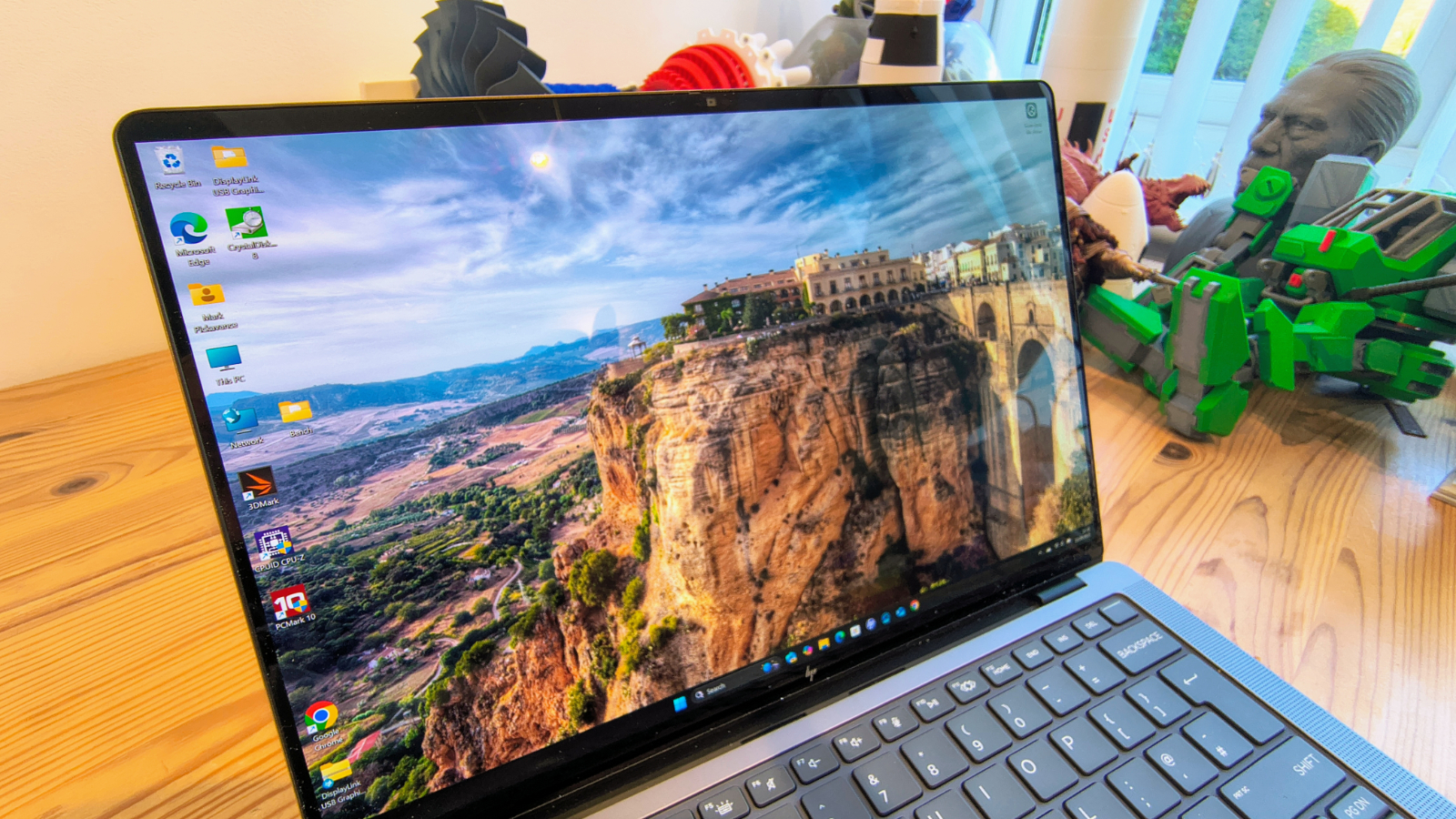
- How much does it cost? From $1890/£1500/€1,699
- When is it out? Available now
- Where can you get it? Direct from HP or via Amazon
As you would probably expect, HP makes many different SKUs of the HP Zbook Ultra G1a, starting from those that have the Ryzen AI Max PRO 385 CPU and 8050S GPU.
These start at around $1889 in the UK, for a machine with 32GB of RAM and 512GB of storage. That doesn’t seem too crazy, but then that SKU doesn’t have a touch screen and only a WUXGA (1920 x 1200) IPS panel.
Those wanting a machine like the review hardware, with the top processor, OLED touchscreen, and larger amounts of RAM and storage, need to buckle up.
The closest SKU I could find to the review hardware, which features the Ryzen AI Max+ PRO 395 processor, 64GB of RAM, 2TB of storage, and a 2.8K touch OLED display, is priced at $3,079.
In the UK, an entry-level HP Zbook Ultra G1a will cost you £1,499.99, and one with the review spec is £2,111.99 from HP. However, I was able to find the exact model (A3ZH3ET#ABU) from a laptop retailer for only £ 1,817.
The most expensive option is a model with the top processor, 128GB of RAM, and 2TB of storage, which could easily cost you over $3000, or more.
Most models on offer are all pre-defined SKUs, but you can entirely customise the machine to have whatever you want. I would warn against doing this, since the prices for memory and storage upgrades are frankly outrageous.
The trouble with the technology in the Zbook is that it's so new that relatively few brands have products out that use it. Lenovo, for example, hasn’t got this platform in its ThinkPad range yet. Dell has nothing available with a Ryzen AI Max+ PRO 395 in it, and neither does Acer.
Asus has the ROG Flow Z13, a gaming laptop, if you can find one. And, it's in a similar price range, if not even more expensive.
Where this silicon is more accessible is in a Mini PC from the likes of GMKtec, Beelink, Minisforum and others. But obviously, those aren’t laptops.
The brutal reality is that if you want one of these made to the standards of HP, then it's going to be expensive until other brands get their act together.
But the number of SKUs that are sold out suggests companies are willing to pay for this performance level.
- Value: 3 / 5
HP ZBook Ultra G1a 14: Specs
Category | Item |
|---|---|
Processor | AMD Ryzen AI Max+ PRO 395 (up to 5.1 GHz max boost clock, 64 MB L3 cache, 16 cores, 32 threads) |
NPU Performance | 55 TOPS (Neural Processing Unit for local AI tasks) |
Total TOPS | 126TOPS (NPU and CPU combined) |
Memory | 64 GB LPDDR5x-8533 MT/s (soldered, non-upgradable) |
Storage | 1TB PCIe Gen4 NVMe SSD |
Graphics | AMD Radeon 8060s Graphics |
Display | 14-inch diagonal 2.8K OLED touch display |
Camera | 5 MP IR AI camera |
Audio | Quad stereo speakers, dual microphones, Poly Studio tuning, AI noise reduction |
Ports Right | 1x Thunderbolt 4 (USB-C), 1x USB-A, Security cable slot |
Ports Left | 1x HDMI, 1x Thunderbolt 4 (USB-C), 1x USB-C (10Gbps charging), 1x headphone/mic combo |
Wireless | MediaTek Wi-Fi 7 MT7925 (2x2) and Bluetooth 5.4 wireless card |
Battery | HP XL-Long Life 4-cell, 74.5 Wh Li-ion polymer |
Operating System | Windows 11 Pro |
Security | HP Wolf Security, TPM 2.0, fingerprint sensor, auto lock/awake, onlook detector |
Size | 31.22 x 21.46 x 0.92 cm (front); 31.22 x 21.46 x 1.31 cm (rear) |
Weight | 1.49 kg |
Sustainability | Up to 90% recycled magnesium, 50% recycled plastic in keycaps, recyclable packaging |
Warranty | 3-year limited warranty with HP Wolf Pro Security Edition |
Colour | Meteor Silver Aluminium or Eclipse Gray Aluminium |
HP ZBook Ultra G1a 14: Design
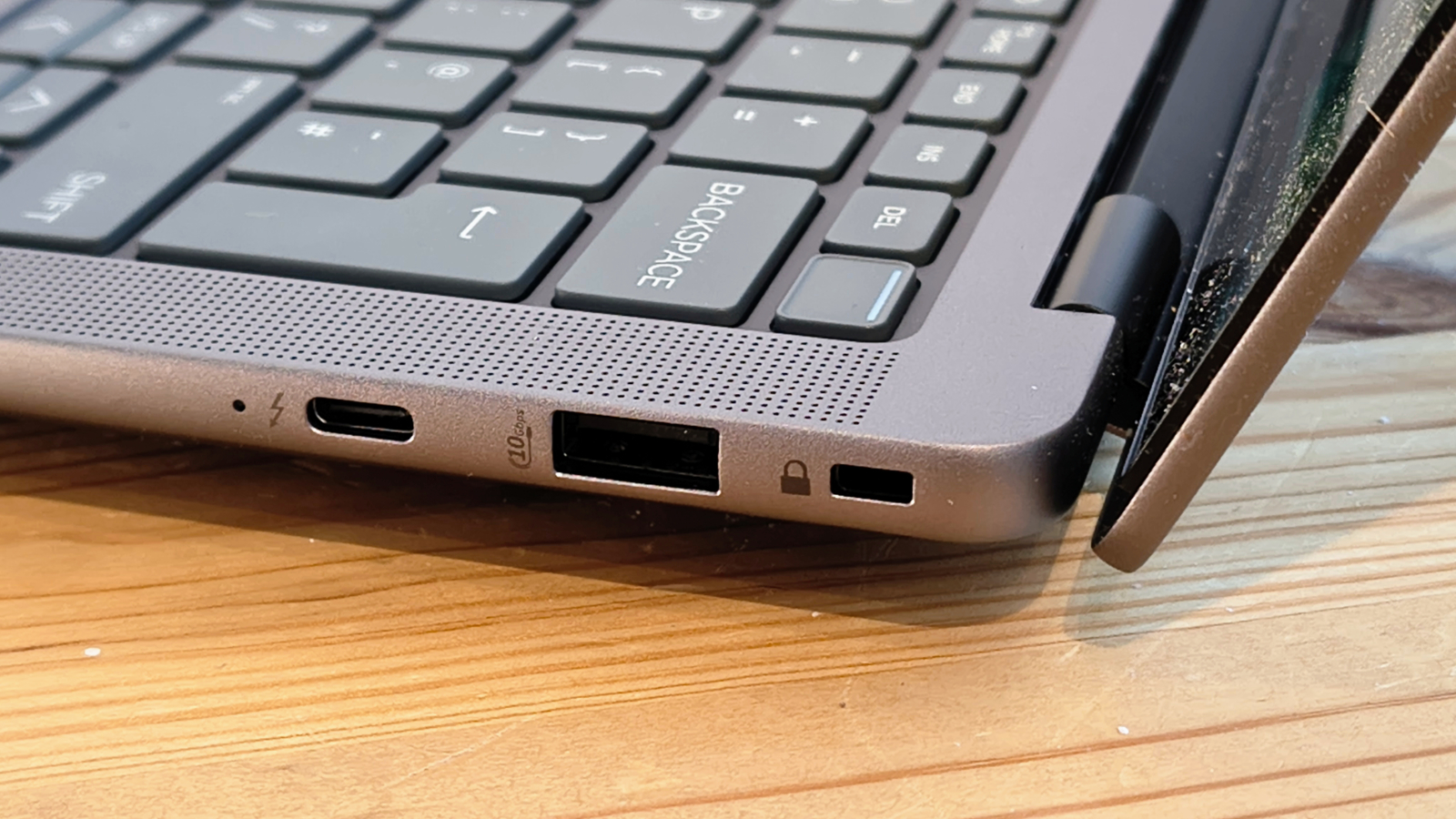
- Thin and elegant
- Lots of USB and Thunderbolt
- Stunning OLED screen
- Almost no upgrades
This machine appears to borrow much of its chassis from the current EliteBook series, and if you put them together, they’re practically identical, including the port arrangement.
This is a compact design with an aluminium skin that feels solid and robust. As I’ve mentioned elsewhere, I’m not a massive fan of the way cursor keys are implemented on these HP keyboards, but the keys are at least large and well spaced.
HP didn’t take the MacBook approach to this machine, and it has plenty of USB and Thunderbolt ports that avoid making a docking station a necessity. If you do go down that path, maybe to have more than two screens, it’s worth noting that the PSU that HP includes is rated for 140W, and only a few docks deliver that much power to their host system.
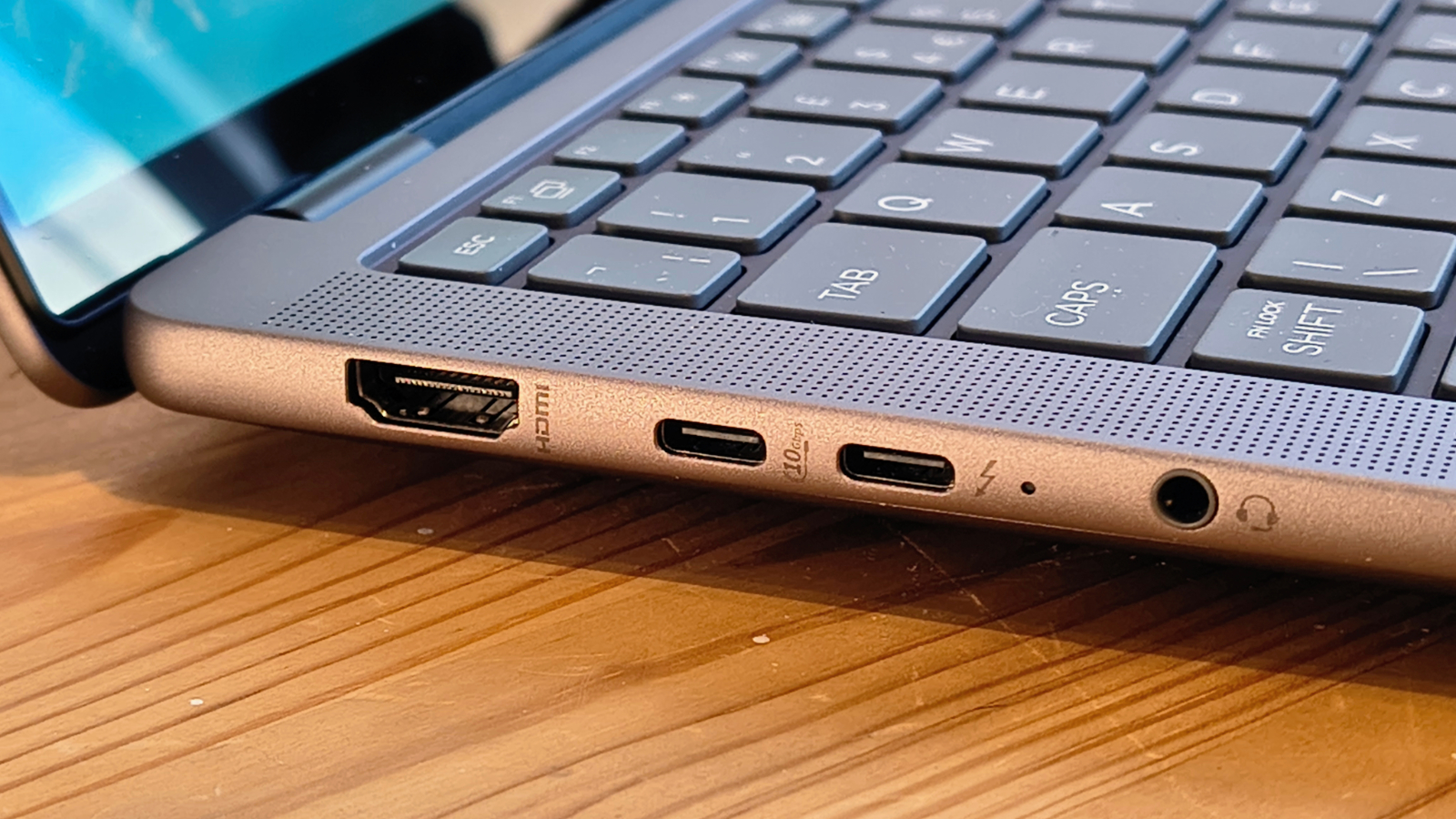
The standout feature of this machine from the outside is undoubtedly the 2.8k OLED touch-enabled display, which has an excellent colour gamut and epic contrast levels. This is a significant upgrade over the IPS 1920 x 1080 resolution screen that HP is using on its cheaper machines, and creatives will love it.
However, the caveat to that display is that it has a glass coating to protect it from oily fingers, and this is highly reflective when used outside or with strong sunlight coming through the windows.
Access to the interior is relatively easy, requiring only the loosening of four retained screws and the subtle use of a plastic spudger to spring a few latches. Given how easy it was, it follows that when a hardware maker doesn’t make entry a challenge, there are almost no options inside. You could replace the battery and swap the M.2 storage, but there is no second M.2 slot, and the memory is soldered to the mainboard. Therefore, from an upgrade perspective, this well is almost dry.
In this context, I have some sympathy for HP, because getting this platform into a chassis so compact didn’t allow space for any future proofing, regrettably. It borrows enough from the EliteBook machines to make replacement parts for the screen and keyboard easy enough to find, though any work fixing the motherboard could be challenging, considering how little room is left inside this chassis.
It looks like, and mostly is, an Ultrabook, but with workstation components under the skin.
- Design: 4 / 5
HP ZBook Ultra G1a 14: Hardware
- AMD Ryzen AI 395 Max+
- Radeon 8060s GPU
- Amazing bandwidth of LPDDR5x-8533
The AMD Ryzen AI Max+ 395 is a robust processor engineered to cater to the needs of contemporary computing, especially in the fields of AI, gaming, and professional tasks. Featuring 16 cores and 32 threads, it operates at a base clock speed of 3GHz, with the capability to turbo boost up to 5.1GHz.
This high core and thread count makes it particularly well-suited for multitasking, executing complex simulations, and managing extensive datasets. Furthermore, the Ryzen AI Max+ 395 goes beyond mere performance by incorporating advanced AI features, making it an excellent option for developers and researchers engaged in machine learning and AI initiatives.
When comparing it to Intel’s leading offering, the Core Ultra 200 series, notable differences arise. While the Arrow Lake-H generation from Intel also possesses sixteen cores and threads, AMD’s sixteen Zen 5 cores can handle thirty-two threads concurrently. Intel’s design incorporates only six performance cores, while the majority serve efficiency purposes; in contrast, all of AMD’s cores are geared towards raw performance.
The trade-off here is battery life against performance, as the Arrow Lake-H chips will offer better longevity but can’t match the performance.

One aspect where Intel is significantly outgunned is in graphics, as the new Radeon 8060s are at least twice as fast as their 890M predecessor, and much better than Intel’s ARC 140 series.
Some of that performance boost comes from the increased number of shaders and clock speeds, but it also sees a significant improvement from the LPDDR5x-8533 memory on this system. With an ECC quad-channel configuration and a rated speed of 8000 MT/s, the quoted memory bandwidth is an incredible 256 GB/s.
With the 8060s GPU sharing main memory with the CPU, it achieves a bandwidth level that was previously only expected from the use of GDDR5 memory on discrete video cards a few years ago.
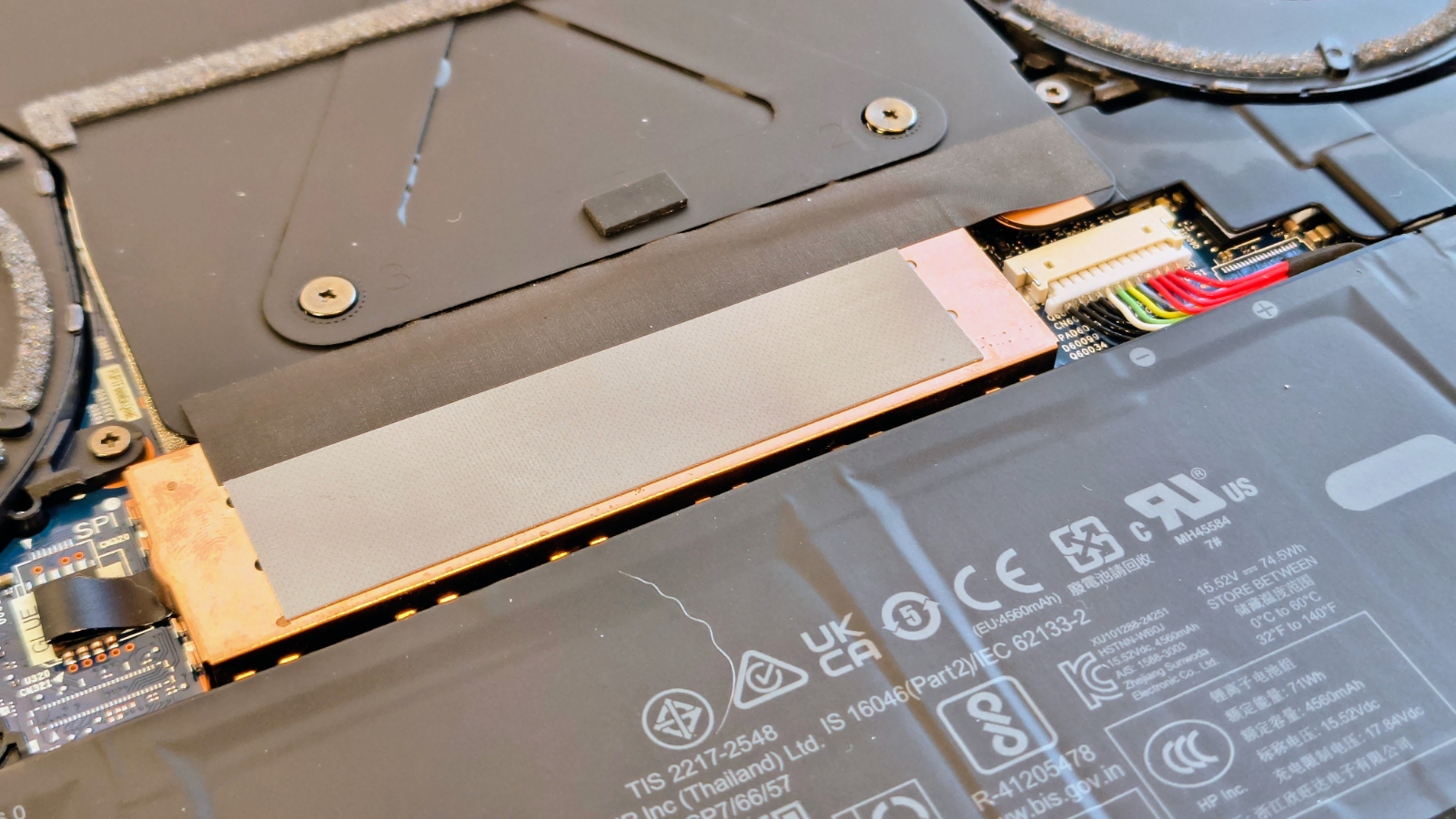
These advantages extend to the AI component of this offering, with the NPU delivering 55 TOPS and the CPU contributing to a combined performance of 126 TOPS. While we might end up laughing at these numbers a few years down the line, right now, this is much more powerful than anything Intel has for mobile or even desktop use.
For comparison, a discrete video card such as the Nvidia RTX 4090 might exceed 1300 TOPS. However, that’s not a practical piece of hardware to put inside a laptop due to space, power demands, and heat generation. For an APU, the AMD Ryzen AI 395 Max+ is in a class of its own.
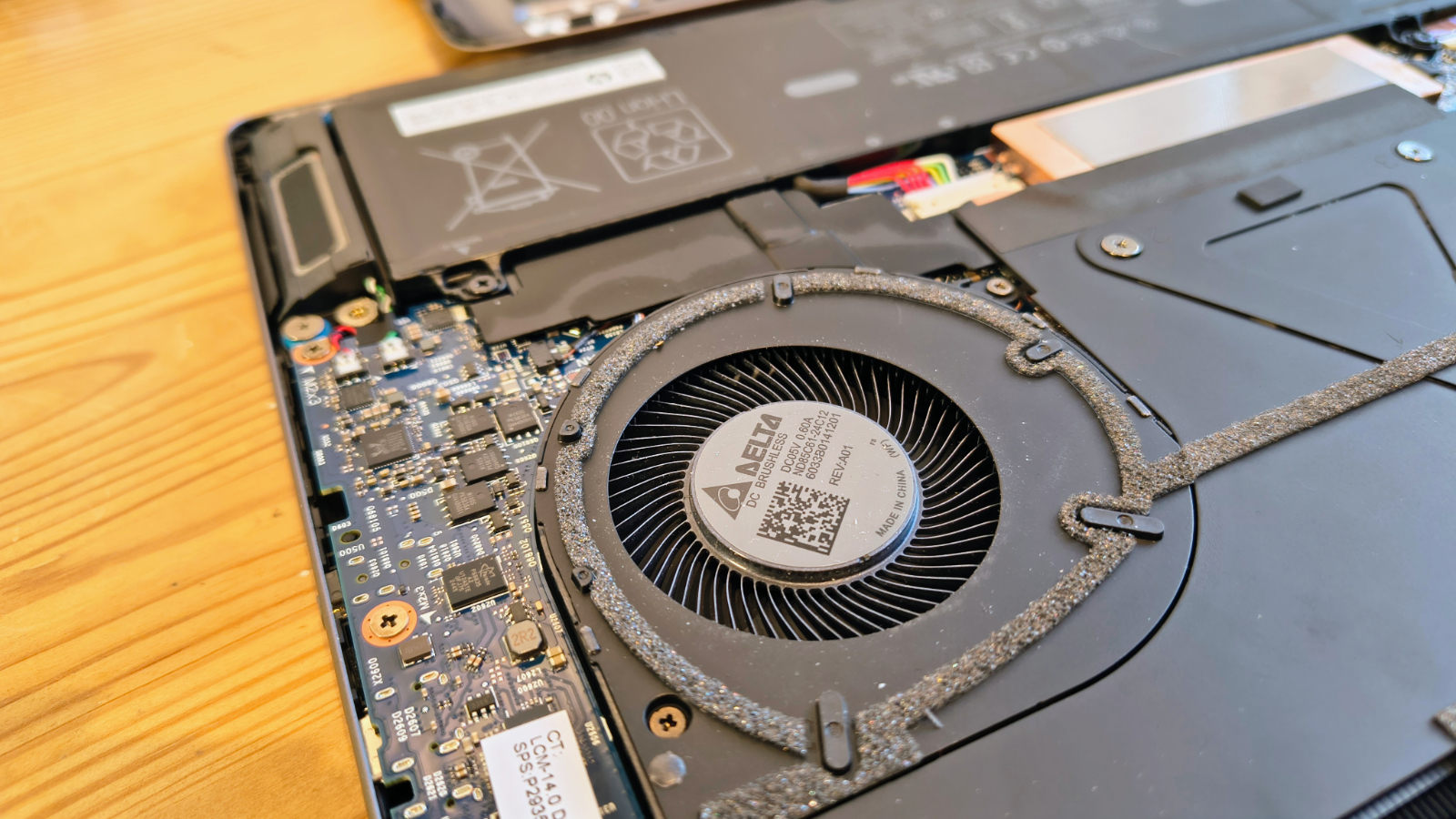
- Hardware: 5 / 5
HP ZBook Ultra G1a 14: Performance
Laptops | Header Cell - Column 1 | HP Zbook Ultra G1a 14 | Dell Precision 7780 |
|---|---|---|---|
CPU | Row 0 - Cell 1 | AMD Ryzen AI 395 Max+ | Intel Core i9-13950HX |
Cores/Threads | Row 1 - Cell 1 | 16C 32T | 24C 32T |
TPD | Row 2 - Cell 1 | 45-120W(55W) | 55W |
RAM | Row 3 - Cell 1 | 64GB LPDDR5-8000 | 32GB DDR5 (2x16GB) |
SSD | Row 4 - Cell 1 | 2TB Kingston OM8PGP42048N | SK Hynix 801 1TB |
Graphics | Row 5 - Cell 1 | AMD Radeon 8060S | Nvidia RTX 3500 |
NPU | Row 6 - Cell 1 | AMD Ryzen AI (50/126 TOPS) | N/A |
3DMark | WildLife | 49780 | 73,250 |
| Row 8 - Cell 0 | FireStrike | 19558 | 27,832 |
| Row 9 - Cell 0 | TimeSpy | 8506 | 13415 |
| Row 10 - Cell 0 | Steel Nomad Lite | 7968 | 14125 |
CineBench24 | Single | 114 | 58 |
| Row 12 - Cell 0 | Multi | 1244 | 876 |
| Row 13 - Cell 0 | Ratio | 10.95 | 15.06 |
GeekBench 6 | Single | 2876 | 1770 |
| Row 15 - Cell 0 | Multi | 16747 | 16704 |
| Row 16 - Cell 0 | OpenCL | 78855 | 145921 |
| Row 17 - Cell 0 | Vulkan | 74848 | 9680 |
CrystalDIsk | Read MB/s | 6683 | 7156 |
| Row 19 - Cell 0 | Write MB/s | 4937 | 6439 |
PCMark 10 | Office | 7919 | 7803 |
| Row 21 - Cell 0 | Battery | 10h 48m | 7h 40m |
Battery | Whr | 74.5 | 93 |
| Row 23 - Cell 0 | PSU | 140W | 240W |
WEI | Score | 9.5 | 8.2 |
I mulled over what machine I’d use to compare, since none of the recent Intel 200 series machines I’ve seen are classed as mobile workstations.
In the end, I went with the Dell Precision 7780, a heavy-duty mobile workstation that cost even more than the ZBook.
As you can see, considering that it's the cutting-edge of mobile hardware in the HP, it still can’t go faster than the Dell in the graphics tests.
However, this isn’t a fair fight, as the AMD machine utilises an integrated GPU, while the Dell machine features an Nvidia RTX 3500 mobile discrete video card. The RTX 3500 Ada Generation is a professional mobile GPU featuring the 5nm Ada Lovelace architecture (AD104), with 5120 CUDA cores, 12 GB of GDDR6 memory on a 192-bit bus, and a 100W TDP.
With all those shaders and its own independent GDDR6 memory, it should win, and possibly by a bigger margin than these benches reveal.
As a computing platform, the 13th Generation Intel Core i9-13950HX performed poorly, and even with 24 cores, it struggled in both the CineBench 24 and GeekBench 6 tests.
The power consumption of the Intel Core i9-13950HX and RTX 3500 delivers a running time of less than a working day, even with a 93Wh battery.
It should also be noted that the ZBook recovered almost half its battery capacity in thirty minutes, whereas the Dell took over an hour to hit a 50% recharge.
Had I chosen a more concurrent Intel system, perhaps using the Intel Core Ultra 7 268V and the Intel Arc 140V GPU, it would have been soundly thrashed in almost every test.
While I didn't run any AI tests, it would have been a victory for the ZBook, as Intel had no AI technology in 13th-generation processors.
Ignoring workstations with discrete video technology that don’t work well on battery power, the HP ZBook Ultra G1a 14 demonstrates the power of an Ultrabook-sized machine with the latest AMD silicon onboard.
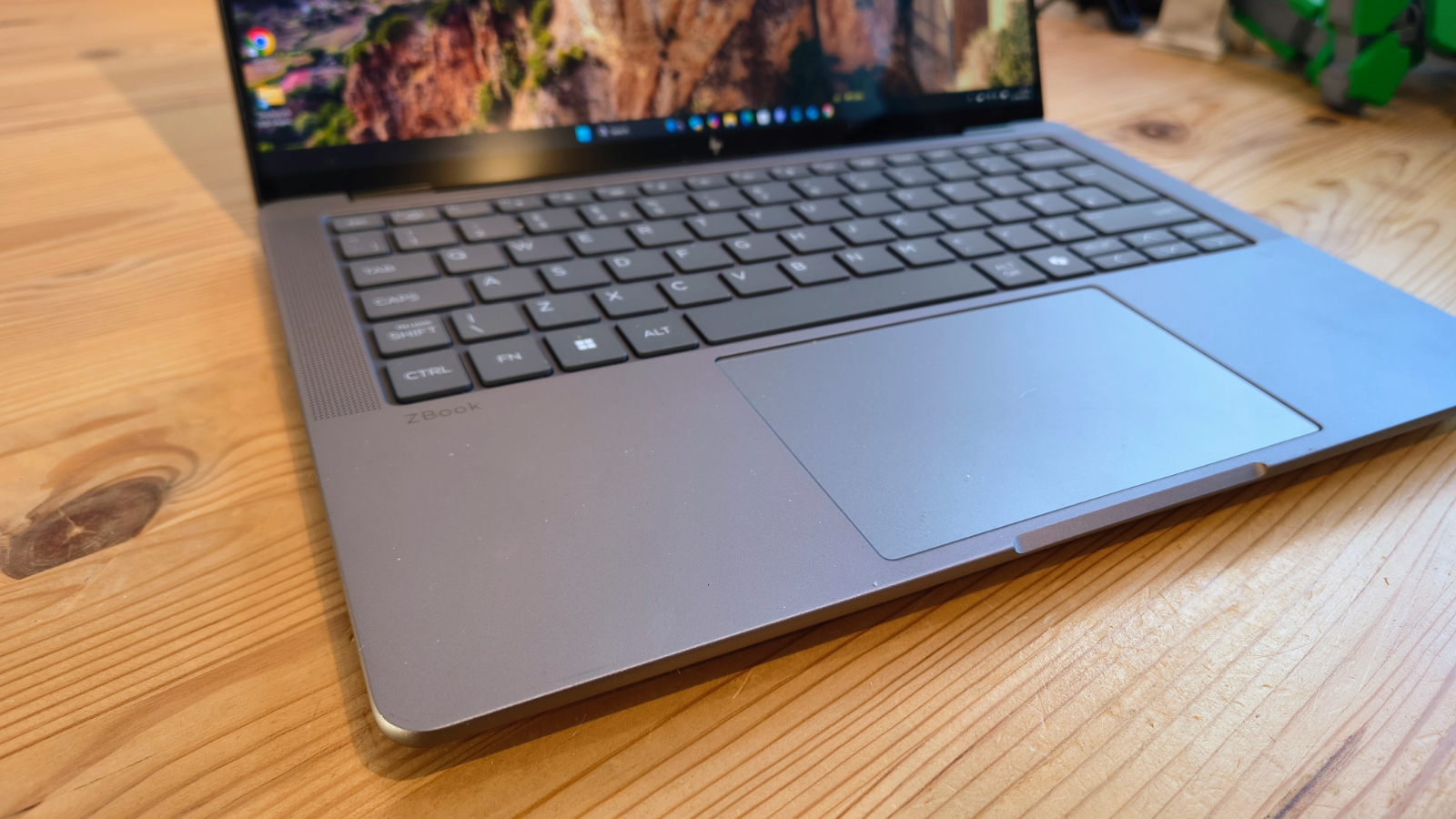
- Performance: 5 / 5
HP ZBook Ultra G1a 14: Final verdict
Let’s be brutally honest, this is a fantastic laptop that takes Intel’s best silicon and pushes past it effortlessly, but the price HP chose is somewhat of a gouge.
Most managers find it challenging enough to get a $2,000 laptop approved, but this one could easily exceed $4,000 or more, depending on options.
Recently, I reviewed the Bossgame M5 AI, a mini PC that uses the same AI 395 platform, which comes with 128GB of memory and 2TB of Kingston-branded storage. That costs about $1800, meaning you could have two of them for the price of one ZBook.
Yes, you would need monitors, keyboards and mice, but that’s a huge difference, and entirely rebuffs the notion that this is expensive because AMD is asking too much for its latest chips. But without competition, it can. HP has given this machine a flagship price because it knows that some corporate customers will be willing to pay it.
This is a huge shame, because many hard-working people deserve this level of performance to maximise their productivity, but fewer are likely to have a boss who will provide them with a system to deliver it.
However, history tells us that within six months or more, when many brands have laptops utilising this exciting platform, the price will become much more realistic.
Should you buy a HP ZBook Ultra G1a 14?
Value | When you are first, you can ask whatever price you like | 3 / 5 |
Design | Borrows from the EliteBook series on the outside | 4 / 5 |
Hardware | AI 300 series AI CPU, DDR5 and new 8060s Radeon make it amazingly powerful | 5 / 5 |
Performance | Incredible performance that is only beaten by discrete video cards | 5 / 5 |
Overall | Incredibly powerful and stupidly expensive | 4.5 / 5 |
Buy it if...
You need AI performance
While not on the level of a discrete video card, the TOPS performance of this platform is exceptional, and way above the minimum requirement to run CoPilot locally.
You want an excellent OLED Display
The 14-inch 2.8K OLED screen offers superb colour accuracy, deep contrast, and a smooth 120Hz refresh rate. Ideal for presentations, creative work, and video calls, it elevates the visual experience far beyond typical business panels.
Don't buy it if...
You need exceptional battery life
According to HP, this machine should last more than 14 hours, but it only lasted nearly 11 hours in my test. That’s respectable, but other machines that use the latest Intel Ultra 200 processors or the Qualcomm Snapdragon X series can last longer.
You are on a tight budget
For the money, this is a decent laptop with plenty of nice features and a good hardware platform, but it’s hardly cheap. There are less expensive AMD Ryzen AI processors, but they don't have this sort of performance.
For more options for professionals, we reviewed the best laptops for work and gaming and the best laptops for working from home.
Mark is an expert on 3D printers, drones and phones. He also covers storage, including SSDs, NAS drives and portable hard drives. He started writing in 1986 and has contributed to MicroMart, PC Format, 3D World, among others.
You must confirm your public display name before commenting
Please logout and then login again, you will then be prompted to enter your display name.
